 |
Focus features two in-depth reviews each month of fine art, architecture and design exhibitions and events at art museums, galleries and alternative spaces around Japan. The contributors are non-Japanese art critics living in Japan. |
|
|
 |
 |
 |
A Few of His Favorite Things: Folk Art that Inspired the Modern Designs of Sori Yanagi
Susan Rogers Chikuba |
 |
 |
|
|
|
Textiles collected by Sori Yanagi from India, Bhutan, Tibet, Oceania, Ghana, Nigeria, and the Democratic Republic of the Congo hang on the four walls of the Japan Folk Crafts Museum's main exhibition room, their lively patterns punctuating the space. Photo by Jeff Amas |
The ubiquitous Butterfly Stool, the stackable Elephant Stool. Lighting, bridges, station benches, bus stop shelters, cult-status kitchen goods and flatware and even Olympic flame holders -- the prolific output of industrial designer Sori Yanagi (1915-2011) over his six-decade career is such that you have no doubt seen, if you don't already own or covet, works by his hand. Through November 21, an exhibition at the Japan Folk Crafts Museum looks at the inspirational sources that influenced Yanagi's trademark pure lines and simple curves.
|
 |
|
|
|
Sori Yanagi in the remote and ancient trading post of Ladakh, India in 1983.
|
Like his father Soetsu (1889-1961), who spearheaded the Mingei folk-arts movement in the 1920s and founded the Japan Folk Crafts Museum (Nihon Mingeikan) in 1936, Sori traveled extensively on collecting missions during his 29 years as the museum's director, a role he assumed in 1977. But working in a Japan that was already well on the path of postwar industrialization, and driven by his own personal interests, the junior Yanagi went much farther afield to seek out handmade works made by traditional practices. His quests for the uncontrived designs that lie at the heart of the Mingei philosophy took him to India, Bhutan, Tibet, Afghanistan, and Africa; the textiles, bronze objects, masks, and unglazed pottery he found there form the core of this exhibition.
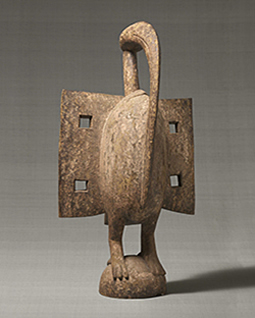 |
|
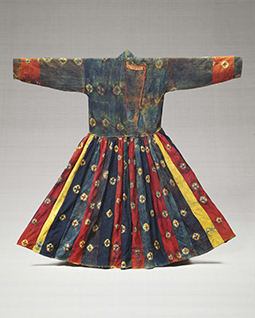 |
|
| Yanagi's zest for life can be seen in the shapes and forms he collected on his travels: this 20th-century Senufo hornbill sculpture from Côte d'Ivoire, a figure used in initiation rites, is symbolic of physical and intellectual strength; the A-line silhouette and brightly patterned pleats of this Tibetan garment, a 19th- or 20th-century piece worn by men, seem fashionably fresh today. |
Also on display are tableware and other household items used by the Yanagi family, many of them made by such leading proponents of the early Mingei movement as Shoji Hamada, Kanjiro Kawai, Kenkichi Tomimoto, and Keisuke Serizawa. For Mingei followers these alone are a huge draw, which may explain why the exhibition, entitled Eyes of Sori Yanagi, doesn't probe deeper than to show objects that Japan's most prominent product designer either saw often from childhood or later sought out himself over a lifetime steeped in issues of craft. For aficionados of Yanagi's own sleek designs, it would be fascinating to see, alongside these works, actual traces of how they inspired his creative process -- a sketched study, journal page, or the odd doodle made while travelling that might illuminate, for example, how the curve of an old jug may have been revisited in a contemporary tea set. Judging by the numbers of students and young designers in the galleries, and indulging my own wishful thinking, that might be fertile ground for a future show, if such materials even exist.
|
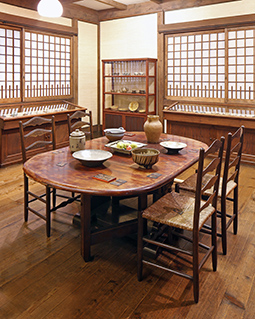 |
|
|
|
Gallery 3 on the first floor exhibits ceramic works and furniture used daily by the Yanagi family from Soetsu's time. The 19th-century ladder-back chairs are from England; the gateleg table is believed to be the work of early Mingei movement supporter Tatsuaki Kuroda, named a Living National Treasure in 1970. The pitcher is an early-20th-century Cornish piece. Photo by Jeff Amas
|
Whereas Soetsu was a philosopher, Sori was foremost a hands-on creator, and his curatorial tastes were largely motivated by that creative impulse. Which of his acquisitions directly prompted new designs and how is anyone's guess, but the folk objects he collected reveal qualities -- some whimsy, balance of form, or joie de vivre -- that are easily recognizable in his own works. At Yanagi Industrial Design Institute, the firm he founded in 1950 and through which he pioneered modernist Japanese design, he insisted on modeling everything by hand (a process that, like philosophy, is well suited to assimilating old forms and ideas in new ways). This stance secured his worldwide reputation as one of the last great reconcilers of craft and industry. One comes away from the show with the understanding that Sori's legacy -- his discerning eye -- is the natural result of family circumstance, genuine talent, and an eldest son's commitment to furthering his father's aesthetic mission in a contemporary way.
|
| Yanagi's minimalist designs are known for their sophisticated, even sexy, contours. Designed in 1956, his iconic white Tajimi porcelain series (seen in the gift shop) predated his acquisition of this 12th- to 16th-century earthenware vessel from Mali, Africa -- but it's no surprise that he was drawn to the older piece's warm curves. Left photo by Jeff Amas |
Eyes of Sori Yanagi also presents examples of kamon-ori, a style of origami resembling pinwheels or floral patterns that was developed by Mitsuhiro Uchiyama (1878-1967), a Buddhist priest. We know from Yanagi's writings that in the precise proportions of these mathematical designs he found a perfect example of crossover between traditional technique (in this case, paper folding) and modern form. In one essay he likened Uchiyama's designs to the spare geometrical paintings of Swiss architect Max Bill, who as part of the Concretism movement sought images that would visually translate the New Physics of the early 20th century.
|
| Gallery 3 on the second floor displays kamon-ori designs bequeathed to Yanagi by their creator, Mitsuhiro Uchiyama. Photo by Susan Rogers Chikuba |
On concurrent display are works from the museum's regular rotating collection: slipware and old European ceramics, pottery from kilns across Japan, Joseon dynasty porcelain from Korea, woven textiles by Takao Tajima (1926-96), and Shinto and Buddhist artifacts from the early 19th century. The range of its holdings and the tasteful blend of Japanese and Western elements in its early-Showa design make the museum a delight to visit at any time, but on the second and third Wednesdays and Saturdays of each month ticketholders can also tour the former Yanagi residence just across the street. Completed one year before the museum in 1935, the two-storey home was designed by Soetsu to comfortably showcase his eclectic collection of crafts and furniture from Japan and abroad, and was distinctly modern for its time; now it simply feels exquisitely Japanese. The entranceway incorporates a gate moved here from Tochigi Prefecture in 1934; with a hip-and-gable roof tiled in Oya tuff stone, it's a dramatic statement of the Yanagi family's commitment to preserving traditional craftsmanship.
|
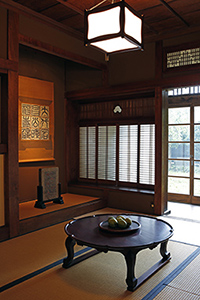 |
|
|
|
There aren't many homes left in central Tokyo that exhibit this much traditional workmanship or strike such an authentic mood. Photo by Jeff Amas
|
|
|
Inside, carefully wrought woodwork, soft light filtering through shoji screens, the scent of tatami, and the sound of wind rustling through the garden's trees add to the experience of seeing Soetsu's book-lined study, where he wrote many of his pivotal works, or the music room of his wife Kaneko (1892-1984), an accomplished classical alto who gave singing lessons here and helped to fund Mingei projects through her recitals. Moving through the very spaces where the Yanagis lived, entertained, and fostered a movement that is all about design's connection to everyday life is a fitting way to cap a morning or afternoon spent appreciating their, and their son Sori's, visionary insights.
|
|
|
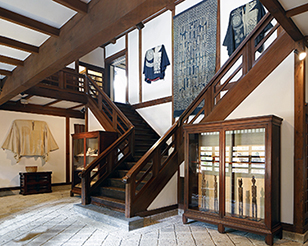 |
|
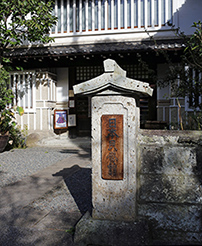 |
|
In the African textiles and figures on display in the lobby, many of which were made for ritualistic purposes, Sori saw powerful expressions of life and spirituality. The museum's Main Hall and outer wall, designed by Soetsu, were designated a Cultural Property of Japan in 1999. Photos by Jeff Amas
All photographs by permission of the Japan Folk Crafts Museum. For an earlier review of its holdings, see the February 2008 edition of Here and There.
|
 |
 |
Susan Rogers Chikuba
Susan Rogers Chikuba, a Tokyo-based writer, editor and translator, has been following popular culture, architecture and design in Japan for 25 years. She covers the country's travel, real estate, hospitality and culinary scenes for domestic and international publications. |
|
 |
|